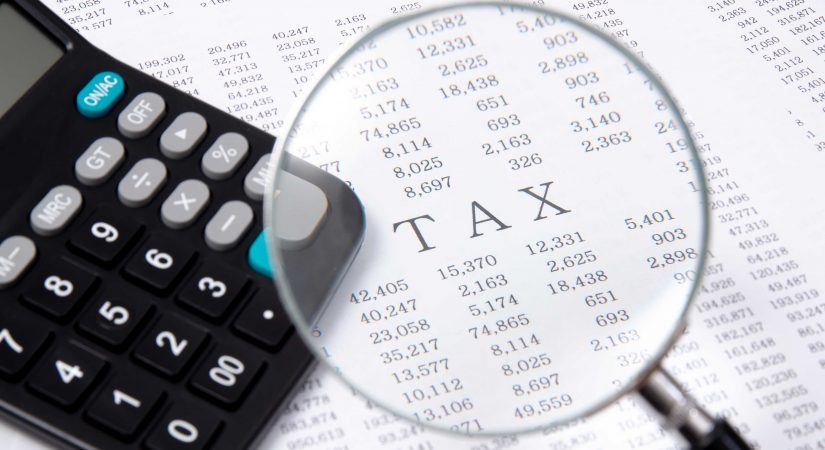Real Property Tax Philippines

One responsibility of a homeowner, aside from paying the mortgage and association fees, is to settle the property’s real estate or real property tax yearly.
Real Estate Tax is a tax levied by the local government on properties such as land, building, improvements on the land or the building, and machinery. Exemption to this law are properties owned by the government, charitable institutions, churches, cooperatives, and those used in the supply of water and electric power.
Why are properties being taxed?
In the Philippines, the Local Governments Unit or LGU has the power to create revenue sources because of Republic Act 7160 or the Local Government Code that was passed in the year 1991.
Section 232 of the Local Government Code designated the taxing powers among local government units to prevent double or multiple taxations. Under this law, the ceiling of tax rates is provided, and the National policy still sets the tax base, the valuation rules, and the local government’s limits.
Section 197 to 283 of the Local Government Code allows the local government, from provinces to cities and municipal government in Metro Manila to have the power to impose a real property tax.
The Local Government Code did not specify the meaning of real property for purposes of taxation. In the absence of such a definition according to Nicolas and De Vega Law Offices, Article 415 of the Civil Code applies, and the following are considered real property:
- Land, buildings, roads, and constructions of all kinds adhered to the soil;
- Trees, plants, and growing fruits, while they are attached to the land or form an integral part of an immovable;
- Everything fixedly attached to an immovable, in such a way that it cannot be separated therefrom without breaking the material or deterioration of the object;
- Statues, reliefs, paintings, or other objects for use or ornamentation, placed in buildings or on lands by the owner of the immovable in such a manner that it reveals the intention to attach them permanently to the tenements;
- Machinery, receptacles, instruments, or implements intended by the owner of the tenement for an industry or works which may be carried on in a building or on a piece of land, and which tend directly to meet the needs of the said industry or works;
- Animal houses, pigeon-houses, beehives, fish ponds, or breeding places of similar nature, in case their owner has placed them or preserves them to have them permanently attached to the land, and forming a permanent part of it; the animals in these places are included;
- Fertilizer used on a piece of land;
- Mines, quarries, and slag dumps, while the matter thereof forms part of the bed, and waters either running or stagnant;
- Docks and structures which, though floating, are intended by their nature and object to remain at a fixed place on a river, lake, or coast;
- Contracts for public works, and servitudes, and other real rights over immovable property.
The Local Government Code also included exemptions on Real Estate Tax such as:
- Real property owned by the Republic of the Philippines, its political subdivisions, except when the beneficial use thereof has been granted, for consideration or otherwise, to a taxable person;
- Charitable institutions, churches, parsonages, or convents appurtenant thereto, mosques, non-profit or religious cemeteries, and all lands, buildings, and improvements, directly, and exclusively used for religious, charitable or educational purposes;
- All types of machinery and equipment that are, directly, and exclusively used by local water districts and government-owned or–controlled corporations (GOCCs) engaged in the supply and distribution of water and/or generation and transmission of electric power;
- All real property owned by duly registered cooperatives as provided for under RA 6938; and
- Machinery and equipment used for pollution control and environment protection.
With the Local Government Code, the local government where the properties are situated has the right to appraise all real properties that are either taxable or exempted at their current and fair market value.
Real property is also classified as residential, agricultural, commercial, industrial, mineral, timberland, or special, valued, and is assessed based on its actual use, regardless of where it is located, who owns it, and who uses it.
This assessment extends to equipment, instruments, and types of machinery found on the real property, whether attached either permanently or temporarily.
Rate of Real Estate Tax: Fair Market Value and Assessment Level
The rate of real estate tax depends on the location of the property.
For cities and municipalities within Metro Manila, the real estate tax should not assess exceeding two percent, while provinces should assess not more than one percent of the assessed value of the property.
The assessed value is based on the property’s fair market value multiplied by the assessment level. The assessment level value may vary as the local government unit determine it.
How to compute real estate tax?
To compute the real estate tax, the location of the property should be identified first. Bear in mind that the real estate taxes for Metro Manila and the provinces are different. Metro Manila’s real estate tax is at two percent while for the provinces, it is at one percent.
The formula to compute real estate tax is REAL ESTATE TAX = REAL ESTATE RATE X ASSESSED VALUE OF THE PROPERTY. The assessed value of the property is defined by its fair market value multiplied by the assessment level fixed through ordinances.
The assessed value may be defined as the property’s taxable value. To get the taxable value of a property, you need to multiply the market value by the assessment level.
Assessment levels vary per property, based on their area and usage.
Land use Assessment Levels Residential 20% Agricultural 40% Commercial, Industrial and Mineral 50% Timberland 20% Special classes: cultural, scientific 15% Hospital, and water districts 10%
For example, a residential property located in Makati City which is located in Metro Manila has a market price of Php 5,000,000.
The property has a parcel of land valued at Php 3,000,000. The structure of the house including the building and improvement is Php 2,000,000.
To compute the real property tax, start by defining the total assessed value of the property. To do this, add the assessed value of the residential land and the assessed value of the building.
- Assessed Value of Land: Residential Land (Php3,000,000) x Assessment Level (20%) = Php 600,000
- Assessed Value of the Building: Residential House (Php2,000,000) x Assessment Level (20%) = Php 400,000
- Total Assessed Value of the Property: Assessed Value of Land (Php 600,000) + Assessed Value of House (Php 400,000) = Php 1,000,000
After getting the total assessed value of the property, multiply the applicable real estate tax rate (Metro Manila or provincial) to get the amount that needs to be paid.
- Real Property Tax: Total Assessed Value (Php 1,000,000) x Metro Manila Real Estate Tax Rate (2%) = Php20,000
Now that you have the Real Property Tax, you need to add the Special Education Fund tax.
Special Education Fund is an additional one percent levied on the assessed value of the real property. The proceeds of this fund will go to the budget of local schools.
Special Education Fund levy: Total Asset Value (Php 1,000,000) x Special Education Fund levy (1%) = Php 10,000
The total basic real property tax to be paid for the property in Makati City is Php 30,000 (Special Education Fund levy + Real Property Tax)
Aside from the Special Education Fund levy, this can also be imposed under real estate taxation:
- Ad valorem tax on idle lands: The ad valorem tax is at five percent of the assessed value of real property tax.
- Special assessment to recover 60% of a public improvement that benefits the property.
When and Where do you pay Real Estate Tax?
Property owners can pay real estate taxes either in full or through quarterly installments at the city or municipal treasurer’s office.
Those who want to pay in full must pay before January 31 of each year while for those who want to pay it quarterly, the deadlines are as follows:
- First Quarter: On or before March 31
- Second Quarter: On or before June 30
- Third Quarter: On or before September 30
- Fourth Quarter: On or before December 31
The documents needed to process the payment of the real estate tax are valid IDs, a copy of the latest tax declaration, and copies of the official receipt.
For first-time payors, bring a copy of the previous year’s tax declaration and official receipts from either the developer or the previous owner of the property. These documents are usually handed by the previous owner to the new one during the turnover of the property.
With the advent of technology, paying real estate taxes is also possible online through virtual platforms that facilitate these kinds of transactions.
To be able to access these portals online all you have to do is sign up for an account, sign in, search for your property’s tax declaration number, find the payment button and choose the payment type that you desire.
Here’s the list of online portals in Metro Manila where you can settle your property’s real estate tax:
Online Payment Portals
- Caloocan: Caloocan City Web Portal
- Makati: MakatiOnline Payments
- Mandaluyong: Mandaluyong City Online Services
- Manila: Go Manila
- Muntinlupa: Muntinlupa Online Real Property Payment System
- Pasig: Pasig City’s Online Services
- Quezon City: QC E-Services
- San Juan: Makabagong San Juan
- Valenzuela: Valenzuela City Online Services
For early taxpayers, Local Government Units usually grant discounts not exceeding 20% of the annual tax due. Discount rates may also vary depending on the municipality or city where the property is located.
Who Should Pay Real Estate Tax?
Real estate Tax should be settled by the individual or people who own or whose names are listed in the titles and certificates of the property or whoever owns it as of January 1.
Why do we need to pay Real Estate Tax?
Real Property Tax in the Philippines has a massive effect on the economy of the country.
Local Government Additional Funds
The real property tax is one of the most important tax revenue of a local government unit. During the eighties, it accounted for 23 percent of the total revenues of the local governments. It declined in 1990 to 18 percent and dropped in 1994 to 11.0 percent but eventually picked up over time.
The real property tax is shared with smaller local government units that compose the province or the city.
For provinces, 40 percent goes to their municipality while 25 percent goes to the village or barangay where the property is located, and the province retains 35 percent. For city governments, it is divided between the village (getting one-third) and the city (retaining two-thirds).
With real property tax, the local government units can provide an additional budget to their project for infrastructure, health, education, and the like.
Special Education Fund and Idle Land Tax
Part of the real estate taxation is Special Education Fund and Idle Land Tax. Both are sometimes unutilized but they provide additional funds and benefits to the local government such as:
Special Education Fund
Special Education Fund is an added one percent levied on the assessed value of the real property. The proceeds of this fund will go to the budget of public schools.
Idle Land Tax
Idle Land tax is an additional levy of 5% on idle land that are:
- Agricultural lands with more than one hectare and one-half of idle land;
- Non-agricultural lands with an area of 1,000 sq. meters which remain unimproved;
- Unimproved residential lots in subdivisions.
The tax on idle lands is intended to optimize land utilization and discourage land speculation.
Avoid Penalties
Penalties are imposed on late payments of the real estate tax. The penalty is at two percent interest per month on the unpaid amount and can accumulate to a maximum of 72% in three years.
In the event that the real property tax is not paid, the local government unit concerned may order administrative action thru levy on real property or by judicial action.
If the real estate tax is unpaid for a long period of time, the city or municipality may auction off your property.
However, within one year from the date of sale, the owner of the delinquent real property or a person who has a legal interest, or a representative, shall have the right to redeem the property upon payment to the local treasurer of the amount of the delinquent tax.
These include the interest due and the expenses of sale from the date of delinquency to the date of sale, plus interest of not more than two percent per month on the purchase price from the date of sale to the date of redemption.
Find Real Estate Properties in the Philippines
Looking for real estate properties near you? Check out All Properties‘ thousands of house and lot and residential lot listings available nationwide!




